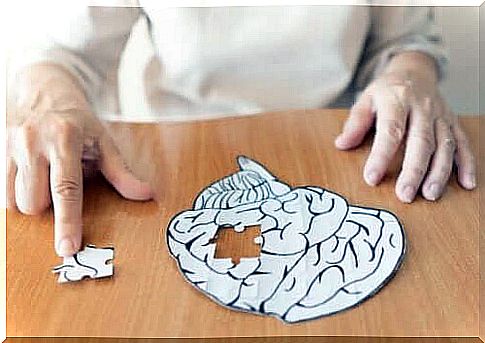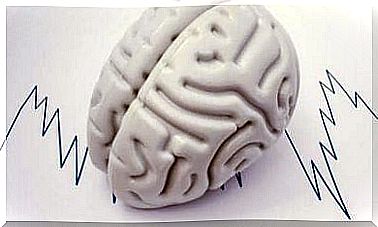What Exactly Is Psychoanalysis And How Does It Work?
Psychoanalysis is an approach to research into the unconscious aspects of the human mind. Is it a science? How does this method work? Read on to find out!

Psychoanalysis is the most important predecessor of psychology in history. In fact, we often hear central psychoanalysis terms even in our daily life.
Often people use terms such as “unconscious”, “suppress” or “mental dropout” as a matter of course. All of these expressions come from the school of psychoanalysis.
In today’s article, we’re going to give you an overview of psychoanalysis so you can understand what it is and how it works.
It all started with Sigmund Freud.
What is psychoanalysis?
According to psychoanalytic theory, human behavior is the result of a series of psychological interactions at different levels of consciousness: unconscious, preconscious and conscious.
Freud received tremendous recognition for developing the theory of psychoanalysis in its early stages.
As time went on, psychoanalytic concepts were increasingly challenged as psychology took a more scientific and less philosophical direction. At present, psychoanalysis can be defined as a theory that seeks to understand how the human mind works from an unconscious point of view.
Psychology broke away from psychoanalytic theory. However, many concepts of psychoanalysis remain in psychological language and can illustrate some of the phenomena of human thought.
Psychoanalytic theory represents the origins of modern psychology – especially in the field of psychotherapy. Many psychologists have a preference for psychoanalysis as a therapy and even train to be psychoanalytic therapists. (However, they also have a degree in psychology.)

How does psychoanalysis work?
The word is at the center of psychoanalytic therapy. The aim is to help patients through discussions by confronting them with situations from their past in ongoing weekly sessions.
Childhood is one of the most prominent phases during psychoanalytic sessions. In addition, the main idea of this form of therapy is to obtain certain information – namely what people have suppressed in their unconscious.
This is the only way for a patient to internalize their past experiences and react more adequately in the present.
According to Freud, there are three instances in the mental apparatus: the “it”, the “I” and the “superego”. The id represents the innate desires of man, the super-ego is the product of the relationship of the individual to his environment. It strives for a balance between its own desires and living together. After all, the I is the conscious authority.
Psychoanalysis is a lengthy therapeutic process that can drag on for years. Some think that taking a long time to get results is counterproductive. Critics of the theory even claim that it makes no sense to subject a person to such a lengthy process of reappraisal.
The basic principles of psychoanalysis
Every psychoanalyst should be able to treat his patient according to the requirements of his individual case. The therapeutic approach therefore depends to a large extent on the treating therapist.
However, there are some basic principles that we must not overlook. So here are some guidelines to better understand how psychoanalysis works:
- First of all, the cause of current conflicts often lies in unresolved childhood issues.
- In addition, the patient’s psychological conflicts are the result of unconscious thought processes.
- The hidden problems are the cause of the symptoms.
- Finally, the psychoanalytic process helps to make these unconscious thoughts conscious (at this moment the patient can access the true solution to his conflict).
In addition, there is the theory of instincts in psychoanalysis.
Urges represent the intense and uncontrollable desires of people. They are the longings that simply cannot be suppressed.
Urges are instinctive and need to be satisfied. However, social norms and moral principles that everyone knows and interprets logically prevent people from inappropriately gratifying their urges.
What is the purpose of psychoanalytic therapy?
The psychoanalytic process helps to gain a comprehensive understanding of one’s own personality. Hence, this therapy works very well for people who experience intense and recurring emotional distress. It helps them understand the exact causes of their problems.
A patient may experience relief when able to pinpoint the source of their discomfort. The resolution of uncertainty has a very healing effect.
In contrast, the psychoanalytic process is not advisable for those who need a quick resolution to a particular conflict.
As we mentioned earlier, the theory developed by Sigmund Freud focuses on the unconscious sides of the personality. Those that are not easily accessible in the short and medium term. Defense mechanisms are the biggest barrier to quick results.
Freud found that a number of psychological phenomena arise in the mind designed to protect the person when confronted with certain uncomfortable realities. Paradoxically, the defenses of the subconscious mind have an adverse effect as they prevent access to reality.

Criticism of the theory
Throughout its history, psychoanalytic theory has been heavily criticized because many of its principles have not proven effective. Returning to childhood to resolve a present-day conflict works for some, but not all.
As you can see, psychoanalysis has become an anecdotal treatment. But in the world of psychological jargon, the terms derived from this theory are still considered symbolic.









